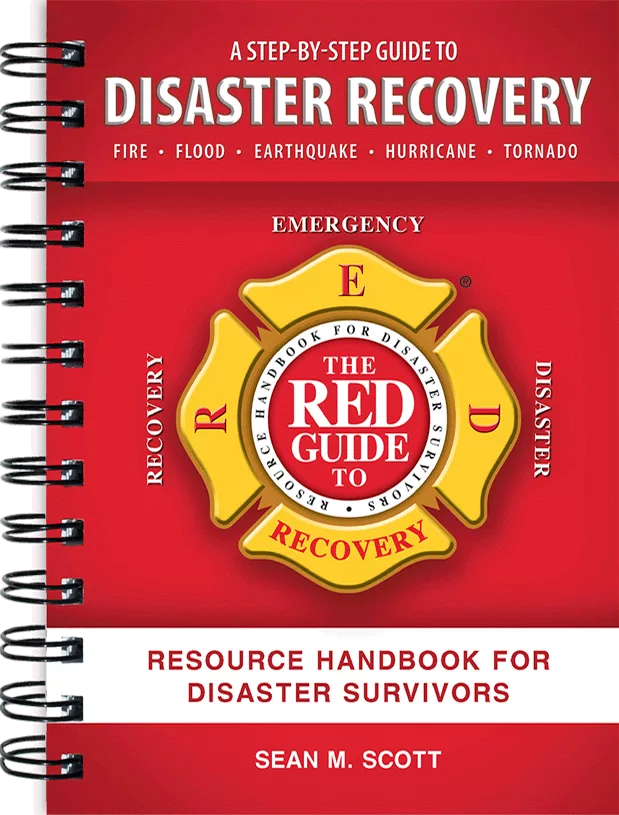A Coatings Compendium: Asbestos Encapsulation
Have you noticed the once clear-cut segments of remediation are blurring? Asbestos contractors are providing mold remediation. Restoration contractors are handling asbestos. Thanks to the RRP, tens of thousands are self-promoting as experts on lead paint. Doesn’t everyone show up for catastrophe response these days? The turnkey temptation of trying to be all things under one roof has always been irrepressible. But now, due to many factors, the previously individual trades of restoration and abatement are becoming less distinct at an accelerating rate.
Commonalities aid this evolution in our industry, but there are limitations. Across the disciplines of specialty restoration, many trades share common attributes and skillsets. There are some crossover tools and techniques which all sects employ. However, every hazardous substance we mitigate has innate and unique challenges. Accordingly, there will always be specific solution-driven gear for each subset of restoration. So, while an expansion of services can incorporate some familiar assets already owned and known, each addition will require more training and education in critical methods and products that are entirely new.
Coatings used across the spectrum of restoration exemplify facets both of what is mutual among multiple trades, and where there are many very specific differences. Coatings are an excellent example of how understanding and using specific products properly can make a big difference. Examining the coatings we use also provides a vehicle to explore some of the big picture dynamics and debates in restoration that inform decisions on current and expanding services.
There are costly consequences for making wrong product decisions for lack of knowledge. With that in mind, the focus of this piece will be on the three primary encapsulants used by professionals in the course of asbestos abatement. If your contracting company or consulting practice doesn’t currently engage in asbestos work, don’t stop reading - there are many compelling reasons why every restoration pro needs a well-rounded understanding of asbestos.
Restoration contractors engaged in emergency response to water, fire and mold run headlong frequently into asbestos. Not only do customers expect the contractor to know about asbestos and the challenges and options it presents, but in the U.S., the OSHA requirements to protect workers from hazards are universal. The General Duty Clause from 29 CFR 1910 is applicable to construction activity including alteration, repair, demolition and renovation in buildings regardless of age and pertinent whether residential or commercial. In 1984, the U.S. Environmental Protection Agency (EPA) conducted a national survey of 3.6 million buildings, and about 20% contained asbestos. Can workers be protected on only every fifth job? Could a competitor with an asbestos license take work away 20 percent of the time? Certainly these are drivers of the recent surge in interest among fire/smoke/water/mold contractors in getting asbestos training and licenses.
There has been a significant uptick in asbestos enforcement directed at restoration activity. In the past, many local and state asbestos authorities ignored or were oblivious to restoration. That is changing. In several states there is a noticeable trend in violations for asbestos issued to restoration contractors. Whether the motivation is finding new revenue streams or closing long neglected loopholes in enforcement is immaterial to the restoration professional. Combine worker protection, the prevalence of asbestos, and increased enforcement and the convincing conclusion is that everyone in restoration, regardless of their primary business, needs to know asbestos and the tools to deal with it properly.
The three primary coatings utilized when it comes to asbestos are bridging encapsulants, penetrating encapsulants and lockdown encapsulants:
BRIDGING ENCAPSULANTS
Purpose: Abatement of asbestos-containing materials (ACM) by eliminating exposure to airborne fibers by managing ACM in place via application of a coating.
Benefits: Removal is one route to eliminating exposure, but not the only form of abatement as is sometimes assumed. Abatement also includes encapsulation which is a liquid applied film that is so durable it is considered a permanent safeguard against exposure. A key term for the restoration pro to know is “friable.” When ACM is in a deteriorated condition such that fibers can become airborne easily, that surface is referred to as friable, and this is considered an immediate health hazard. Application of an encapsulant can properly fix current friable conditions and prevent them from developing long into the future.
Encapsulation of ACM typically costs far less than abatement by removal. It is faster with less labor and facility disruption. The cost of replacement is taken out of the equation. Savings versus removal can be as much as 50%1. In addition, less waste is generated that requires costly disposal and, because fewer fibers are disturbed, there is a reduced chance of contaminating adjacent areas.
Considerations: Managing ACM in place = it has to be…managed. Because asbestos is still in the building, care must be taken to ensure that occupants and operations do not create a new friable situation. Some types of “cotton-candy” style fireproofing materials are too inherently unstable and application of a coating of any kind might cause disintegration, leading to a more friable situation. Similarly, water-damaged ACM of any kind might be too deteriorated to be eligible for encapsulation2. Foot traffic surfaces often cannot be encapsulated. Bridging encapsulants are higher in solids content than ordinary paint, but the viscosity can vary greatly. Viscosity is a measure of the extent to which a liquid will flow, often perceived as thickness or body. Depending on the asbestos-containing material and jobsite considerations, one can choose a thick/very viscous encapsulant that bridges over uneven surface profiles (desirable, for example, on pipe insulation, aka, lagging cloth). Other situations might be better with a high-solid, but lower viscosity product.
Regulatory Aspects/Requirements: The seminal and sole protocol is the Battelle study Evaluation of Encapsulants for Sprayed-On Asbestos-Containing Materials in Buildings, performed under contract for the U.S. Environmental Protection Agency (EPA). This independent study is still to date the only thorough and unbiased evaluation of commercially available encapsulants for ACM. From 1981-1984, Battelle tested over 100 encapsulants for seven major performance characteristics including impact resistance, permeability, wetting, penetration, cohesion/adhesion, fire rating and surface integrity. For the study authors, the sum total of all these criteria predicted effectiveness for long-term management of ACM in place. In the end, 17 products were rated as acceptable - five of which are still available today. Thirty years on, there are encapsulation projects where these coatings continue to perform, validating Battelle’s process and criteria.
The primary regulatory guidance on use of a bridging encapsulant is found in the EPA’s Guidance for Controlling Asbestos-Containing Materials in Buildings (June 1985)3, often referred to in asbestos circles as the “Purple Book.” The primary instruction provided for bridging encapsulants is that application should be “considerably thicker than recommended for painting. Coverage should be no more than 100 sq. ft. per gallon, and should create a continuous, unbroken coating. 4”
PENETRATING ENCAPSULANT
Purpose: Stabilize asbestos-containing materials, primarily prior to application of a bridging encapsulant.
Benefits: The use of a penetrating encapsulant is a means to an end, not a solution for asbestos in and of itself. The versatility of asbestos as an ingredient in building materials led to incorporation into a vast assortment of building materials. Some ACM are inherently friable, i.e., they will crumble, pulverize or otherwise fall apart into potentially airborne particulate just with the pressure of an ordinary human hand. Other asbestos materials which could have been solid and stable when first installed may have experienced deterioration over time from a variety of causes including weathering and occupant contact. Regardless of original form or the passage of time, ACM may be unable to accept a bridging encapsulant without first applying a penetrating encapsulant.
A bridging encapsulant, as previously described, is high-solids and applied substantially thicker than paint. The encapsulation yielded is thick and durable, but also heavy. Direct application to dimensionally unstable ACM can be unsuccessful because the dry weight of the bridging encapsulant could cause fibrous, fluffy, and/or loose asbestos to separate from within itself as gravity and the weight of the encapsulant stress the surface. Clumps of semi-encapsulated ACM falling apart and down into occupied spaces are certainly an immediately friable hazard and an undesirable outcome.
Application of a penetrating encapsulant is both tool and technique to strengthen the dimensional stability of the ACM that is intended to be encapsulated. Lower in both viscosity and solids content, a penetrating encapsulant is typically applied by an airless sprayer to get resin to soak in. To use the EPA’s description from its Guidelines for the Use of Encapsulants on Asbestos Containing Materials, “Penetrating encapsulants are designed to reduce the friability of the material by soaking into it, binding the fibers together, and increasing the material’s cohesive strength. Because bridging encapsulants are not designed to penetrate into the asbestos-containing material, they will not increase its cohesive strength. The use of bridging encapsulants on friable material may make the problem worse, because the weight of the encapsulant may make the material delaminate even faster.5”
The benefit from application of a penetrating encapsulant is primarily that it enables successful application of a bridging encapsulant on surfaces that could not have been encapsulated otherwise.
Considerations: There are times when the adhesive and cohesive strength of asbestos materials is simply too poor to make those surfaces eligible for encapsulation. Either the stability of the material itself or the adhesion to the underlying substrate is such that application of any coating is impossible, and the only choice is removal. Whether removal is necessary or if a penetrating-bridging encapsulation is possible is determined by a simple, low-tech evaluation commonly referred to as a “pull test.6”
Application of a penetrating encapsulant can take multiple spray passes and some insulation and fireproofing systems absorb differently than others. The “cotton candy” fireproofing often found on structural steel is very absorbent. The tamped, dense fireproofing seen frequently on concrete has a much slower absorption rate. Penetration is not immediate, and the best way to apply penetrants is to make multiple perpendicular passes until the surface glistens but is not dripping. It is important to keep spraying and not let the encapsulant dry. Typically, successful application will penetrate about an inch or slightly more at the maximum.
Another consideration is whether a penetrating encapsulant is necessary at all. For example, a previously painted popcorn ceiling in good condition would only require a bridging encapsulant. A penetrating encapsulant would not be able to get through the preexisting paint. The likely result would be the encapsulant running off the surface, dripping and generally making a mess.
Regulatory Aspects / Requirements: Interestingly, there are no stand-alone penetrating encapsulants for asbestos sold today in North America. When Battelle conducted the testing for EPA in the 1980s, there were products formulated solely as penetrating encapsulants, and those products as well as some bridging encapsulants that could be diluted were tested for penetration ability. In today’s marketplace, a remediation contractor obtains their penetrating encapsulant by purchasing a bridging encapsulant that is miscible (i.e., can be diluted evenly with water). Not every bridging encapsulant can be used as a penetrant, so it is important to choose a multi-use product that has instructions for mixing with water. The dilution rate can vary with the composition of the asbestos. Generally, expect a 1:1 or 2:1 mix of water to encapsulant.
LOCKDOWN ENCAPSULANT
Purpose: Ensure that any residual asbestos-related particulate after removal is prevented from becoming airborne and cannot be inhaled by occupants after abatement.
Benefits: Of bridging, penetrating and lockdown encapsulants, the latter is usually easiest to understand. But there are complexities here too. Asbestos removal involves wetting the ACM to minimize the amount of airborne fibers, and afterward an encapsulant is applied for two reasons. Foremost is that the film formed by the lockdown will protect the public health by making sure any remaining fibers or fragments of asbestos are adhered to surfaces in the work area. If those fibers cannot become airborne in the future, that material cannot be inhaled. If asbestos can’t be inhaled, then the pathway of exposure has been eliminated. However, the second reason for applying an asbestos lockdown is to establish clearance criteria have been met, and containment can be removed and abatement deemed concluded. Without a lockdown, the contractor is taking big chances on failing clearance testing by a licensed asbestos inspector/risk assessor who will be agitating the air in containment, and taking air samples, surface samples, or both.
Lockdowns for asbestos abatement are inexpensive. Only a limited amount of resin is needed to deliver effective capability to secure residual particulate to surfaces, so lockdowns are typically from 10-20% in solids content. Compared to the 60%+ solids in bridging encapsulants, the lockdown encapsulants obviously are for a different role. Not much coating is needed to isolate residual particulate after abatement compared to the coating film needed when ACM will be managed in place. Lockdowns, as a result, are low-solids, high-coverage, low-cost, and the cost is negligible among other material costs associated with removal.
Lockdown encapulants are also used by asbestos professionals as a “pulldown,” meaning a coating that can be aerosolized by airless sprayer into the contained area just at the conclusion of asbestos abatement to make airborne fibers heavy, and allow gravity to pull particulate down. Spraying the air and the plastic surfaces of containment via pulldown treatment assists in achieving clearance.
Considerations: Remediators need to guard against misunderstanding. Lockdowns are erroneously categorized as encapsulants, but they are not controlling any environmental hazard in place other than residual particulate. Too often, inexperienced contractors misinterpret that because the category name includes the word “encapsulant,” lockdowns can be used to manage asbestos in place. Since these products are mostly water, application to asbestos will not form a barrier coating like a bridging encapsulant, and result in wetting asbestos. This leads to unintended consequences such as deterioration of the asbestos, as well as potential mold.
Regulatory Aspects/Requirements: Remediators need to be exceptionally careful when it comes to removal projects involving ACM fireproofing. Those insulating materials need to be replaced, and building code is constructed on Underwriter’s Laboratories (UL) testing of the combination of lockdown encapsulants and new non-ACM fireproofing materials that can be applied as replacement fireproofing. This can get complicated as not all lockdown encapsulants have universal UL classification and testing with all combinations of structural steel building components (flat, cellular, fluted deck, for example), and the cementitious fireproofing systems from major manufacturers.
Creating further confusion is the proliferation in recent years of lockdown encapsulants in the marketplace that have no UL classifications at all. Competition on lockdown encapsulants is fierce, and margins are low. UL Classification is the gold standard for lockdown encapsulants, but it is expensive to achieve and to maintain. In an effort to gain market share, manufacturers and distributors are pushing lockdowns without any approvals.
For the prudent restoration pro, the best course is to only purchase and stock lockdown encapsulants with the most universal offering of UL classifications with the asbestos-free fireproofing products that replace asbestos fireproofing.
Bridging, Penetrating and Lockdown Encapsulants exemplify how knowledge is critical to success. As contractors get training and licensed to add asbestos to their repertoire, these three product categories provide an illustration of how no matter how many skills and tools crossover between restoration trades, there is specialized information in every discipline that must be sought out and learned throughout an organization.
1. Asbestos magazine 1991.
2. Institute of Inspection, Cleaning and Restoration Certification, BSR-IICRC S500 Draft Standard and Reference Guide for Professional Water Damage Restoration, Fourth Edition, Standard Section 17.3, Table 1, page 80.
3. EPA 560 / 5-84024, June 1985.
4. U.S. Environmental Protection Agency, Guidance for Controlling Asbestos-Containing Materials in Buildings, EPA 560 / 5-84024, June 1985, Section 5.1.3, page 5-8.
5. U.S. Environmental Protection Agency, Office of Toxic Substances, Guidelines for the Use of Encapsulants on Asbestos Containing Materials, 2/23/81, page 13.
6. U.S. Environmental Protection Agency, Office of Toxic Substances, Guidelines for the Use of Encapsulants on Asbestos Containing Materials, 2/23/81, Appendix B.
Looking for a reprint of this article?
From high-res PDFs to custom plaques, order your copy today!







